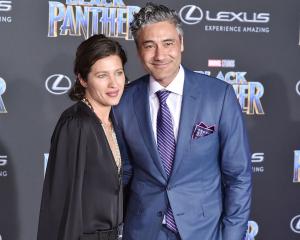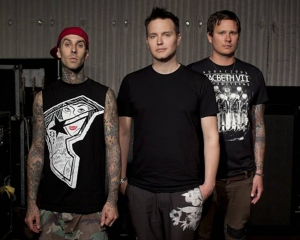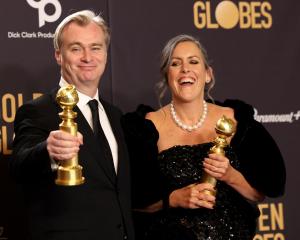Driving up to the stately historic campus of the King Gillette Ranch, tucked into a 200ha state park in southern California, you'd never know this is where television's biggest reality show is made. But it is fitting the one-time home of a razor magnate would house another powerful brand.
On this night, the final four contestants have returned for one more round of stepping on to the scales. They actually left the ranch six weeks ago, just in time for a new batch of morbidly, impossibly obese contestants to begin their journeys of prodigious weight loss and personal growth.
"What's special about this place is we put you in a bubble," says executive producer J. D. Roth.
"Your mind only focuses on weight loss and exercise. That's it.
"There's no pixie dust at home. The pixie dust is at the ranch."
From its humble origins as low-cost filler, The Biggest Loser has grown into one of the world's most successful television formats. Its pixie dust now travels the world.
Two dozen local versions air in countries from Australia to the Caribbean. There's also a Biggest Loser line of food products, as well as supplements and Wii video games. Just down the road in Malibu, the show-themed Fitness Ridge resort invites fans to spend a week slimming down.
"When we first started doing this show," says Roth, "we thought, if we did this right, we could become the Weight Watchers of the 21st century."
But getting it right took a while.
The evolution of The Biggest Loser from cheap, light-hearted Survivor knock-off to inspiring study in human transformation shows how reality television can be so compelling, and what it needs to keep making money.
Reality has been gold for nearly all broadcast and cable networks that produce original programming, perhaps beyond the point of overload.
Ten years ago, there were fewer than 20 reality series. So far this year, more than 560 of them, almost all profitable, have aired on US television.
How did it happen so quickly?
One explanation - some people would say the only one - is that television executives discovered reality television was cheap.
Because reality shows don't employ writers or actors and work with smaller crews, they can drastically cut their costs.
It's not unusual for an hour of scripted, prime-time entertainment to exceed $US3 million ($NZ3.67 million). An unscripted show, such as The Biggest Loser, costs less than $US1 million per hour.
Head over to cable, where 90% of all reality television resides, and the gap is even more striking.
Even with cable's tighter budgets, a show with writers and actors can easily run to $2 million per episode.
And reality?
"You can still make a good hour of unscripted for $300,000 to $500,000," says John Ford, who has held top positions with the television channels TLC, Discovery and National Geographic.
"That's a huge difference. And you can get really good ratings for it."
Sometimes even fantastic ratings.
When TLC bought a British format and renamed it Trading Spaces, it paid just $90,000 per episode. The show's ratings doubled three times within 18 months. At its peak of popularity in 2002, Trading Spaces aired a celebrity edition that got a higher rating than any other US network.
But why do reality shows get such good ratings?
It isn't because they're cheap.
Although Trading Spaces at first appeared to be just a home-decorating show, it really was an exploration of human psychology. By allowing neighbours to perform surprise makeovers of their houses, participants surrendered control of deeply personal decisions about paint and wallpaper. That led to the show's signature moment: the "reveal", when each person reacted to what was done to his or her home.
These are the unscripted, and unpredictable, endings that set reality shows apart from scripted dramas and comedies that were getting long in the tooth.
"With the exception of HBO, there wasn't a lot of interesting television 10 years ago," says Michael Hirschorn, who produced hits for US television channel VH1.
"The opportunity I saw was that you could push unscripted in some really funny and outrageous directions." Reality also allowed for surprisingly rich character development as viewers found real people were often more entertaining than the stock characters of prime time.
The Biggest Loser has made the most out of the allure of the human story line.
In its first three seasons, though, it was just like every other reality competition show.
And it was hosted by a comedian, Caroline Rhea.
Marty Wolff was a contestant on The Biggest Loser back then.
He was a North Kansas City teacher at the time, and he recalls his time on camera as mostly playing "a lot of stupid games".
Behind the scenes, though, a drama more complex and compelling was going on.
Biggest Loser competitors show up when their lives are in crisis.
Unlike contestants on other competition shows, they lack confidence and see themselves, on some level, as failures.
"In many ways I was a big guy full of compromises, afraid to come out and say exactly what I wanted," Wolff says.
"The Biggest Loser got me in touch with me."
Slowly, he began to confront his low self-image. Nobody at home saw the changes happening inside, just the physical makeover on the outside.
But Kat Elmore noticed.
Elmore, who has been on the show's staff since the beginning, was the liaison between the contestants and the producers.
During that third season, which aired in 2006, she began lobbying for more resources to help care for the contestants' emotional and mental needs. She now heads a 20-person department that watches for signs of depression, eating disorders and other problems that spring up while contestants make over their lives.
"People don't become morbidly obese because they like Doritos," says Elmore. "That's not why people are on a mission to kill themselves with food. There's a whole slew of individualised psychological and emotional issues behind it."
These should be the best of times for reality shows. But producers report their already tight budgets are being squeezed further by the networks.
"We as producers have had to be more creative," says Douglas Ross, whose company produces two of the Real Housewives series.
J. D. Roth has shipped some of the editing of The Biggest Loser off to New Zealand.
Reality producers have more to worry about these days than money, though. There's also a sense that reality isn't cool any more. And there are signs that viewers are getting more finicky. Ratings for repeat showings of reality series are doing 60% of the premiere instead of their previous 80%. Ford says there are just two scenarios ahead: Either shows have to make a bigger splash or networks will have to start cutting back on reality.
Scripted shows also are borrowing from the reality playbook, using hand-held cameras and other cost-cutting techniques. And it's believed the freshness of unscripted television has forced scripted to clean up its act and the shoe is now on the other foot.
And yet, more than 10 years in, Survivor is still one of the most-watched shows among young adults. But perhaps the most remarkable story from the reality decade, and very likely for some years to come, is that of The Biggest Loser.
From a makeshift control room in another building, Roth monitors the weigh-in. After each contestant steps on the scale, the show's host, Alison Sweeney, barrages them with questions about their commitment to reshaping their bodies and their lives.
Video loggers sit watching the hundreds of hours recorded by the cameras in the contestants' dorms.
Their notes go to producers, who use them to craft short, emotional pieces that update viewers on how each contestant fared that week.
This is where The Biggest Loser did an extreme makeover of its own.
It started when Elmore began relaying the heart-rending stories of participants whose transformations were tougher than they'd imagined.
Roth realised these stories would make for good television - better than the games and challenges - and added more story producers and got the network to expand The Biggest Loser first to 90 minutes, then to two hours. The tone turned more serious, as embodied in the new host, a soap-opera star. And as the show became more character-driven, ratings began to climb. For a while it was even the network's most-watched series.
"All of a sudden we were able to put some of the great human stories into the show," says Roth.
"You could literally see the change in the ratings and the goodwill of the brand."
And this is what the future of reality television hinges on - its ability to find real people that other real people will want to watch.
"They've found gold," says Wolff.
"It's in the people."












